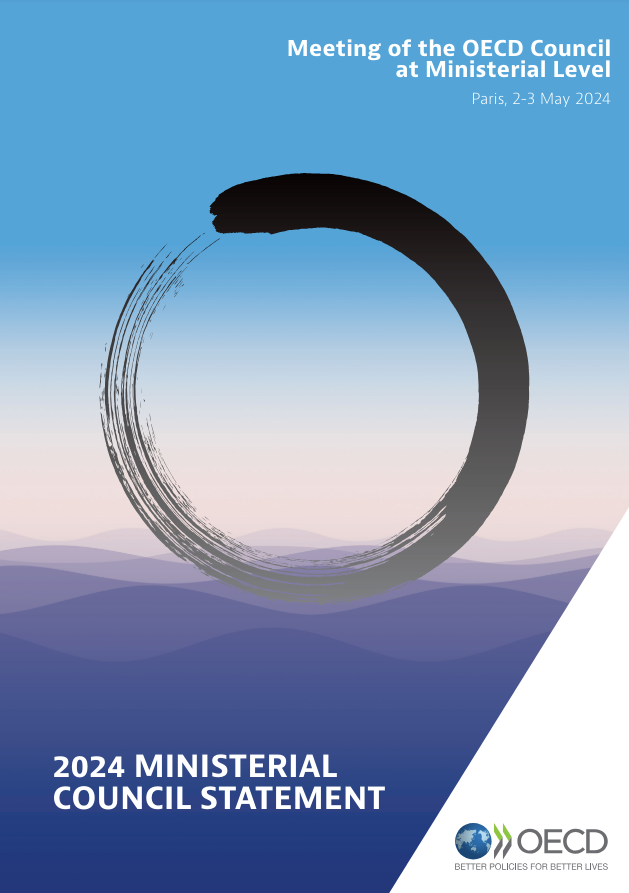Remarks by Mathias Cormann, Secretary-General, OECD
2 October 2023
Good morning,
Welcome to the launch of the 2023 OECD Regional Outlook.
This sixth edition of the Outlook provides policymakers with practical insights on how policy design can and should take into the different circumstances, opportunities and challenges in different regions into account.
Differences between different regions in a country can have a significant impact on the effectiveness of policies.
Whether the aim is to boost growth, improve employment opportunities, ensure effective health and education systems, or facilitate the green and digital transformations, considering the implications of those differences between regions will help optimise the beneficial impact of national-level development and growth.
This year’s Regional Outlook sets out the evolution of regional outcomes across a wide range of areas over the past twenty years.
Looking at the overall picture in aggregate across OECD countries, globalisation has contributed to economic convergence between countries over the past two decades.
However not all regions participated equally in the globalised economy, with some falling further behind.
21 out of 27 OECD countries with available data saw income inequalities between regions widen over those past two decades.
Gaps in access to opportunities for workers and businesses between metropolitan and rural and regional areas largely explain these unequal outcomes.
Metropolitan regions across the OECD exhibit strong dynamism.
Thanks to their access to markets, infrastructure and services, they attract the most skilled workers and the most productive and innovative firms.
As a result, the average GDP per capita in metropolitan regions in OECD countries is about a third higher than in the rest of the country.
On the other hand, many rural and regional areas struggle to deliver quality services and infrastructure to their residents.
A lack of connectivity, both physical and digital, can hinder the development of firms and limit access to employment opportunities in these regions.
On average one in three rural households in the OECD still don’t have access to high-speed broadband.
Similar gaps can be found in public services.
Students from rural areas achieve lower reading outcomes relative to those living in cities.
Travel times to healthcare facilities can be up to five times longer in remote rural areas than in cities.
Close to a third of rural residents in OECD countries report health problems that keep them from doing things they think people their age normally do, compared to a quarter of city residents.
40% of remote regions across the OECD saw their population decline between 2001 and 2021, further heightening risks of economic decline, underinvestment and a lack of competitiveness.
The good news is that there are many examples of countries who have been able turn these trends around.
Finland, Norway, Germany, the Netherlands and New Zealand, are some examples of countries that succeeded in narrowing gaps between their regions.
This edition of the Regional Outlook proposes a roadmap to help lagging regions catch up, while sustaining prosperity in the most dynamic regions.
First, facilitating access to key public services both online and in-person.
Public services, including access to high quality education, health care, and administrative services such as licences and permits, are essential to develop human capital and economic growth potential.
Ensuring timely and easy access to high quality services requires attracting and retaining skilled public service professionals, especially in rural and remote areas.
France has more than 1,000 “Maisons de service au public,” which bring together many physical services in a single location, to tackle unequal access in rural or remote regions.
In Australia, the Workforce Incentive Program provides financial incentives to encourage doctors and nurses to work in underserved areas.
The development of online services, such as teleconsultations or online learning provides an additional opportunity to improve these services.
Second, boosting productivity and competitiveness through better infrastructure.
Good digital and physical infrastructure, especially transportation, facilitates access by firms and workers to jobs and customers.
Closing these gaps will require effective infrastructure finance for rural areas, especially in the absence of market incentives for private firms.
For instance, the US ReConnect Program has made $700 million in grants and loans available to connect thousands of rural residents, farmers and business owners to reliable, affordable high-speed internet.
At the same time, cities’ infrastructure needs will also grow to accommodate their growing populations.
Our recent report for the G20 on Financing Cities of Tomorrow sets out how they can leverage private investment and sustainable finance to meet those infrastructure needs.
Third, providing the right skills and job opportunities in regional labour markets.
Governments must capitalise on their regional assets and their human capital to incentivise the development of firms and of their local economy.
To do so, they need to ensure the availability of training, education and employment services that cater to the current and potential needs of the local labour market.
They can also foster entrepreneurship and innovation by small and medium-sized businesses, including those with social business models.
Fourth, improving the quality of multi-level governance systems.
Clear, well-defined responsibilities for national, regional and local governments can help prevent the duplication of efforts and gaps in the design of regional policies.
The trend is in the direction of decentralisation, and asymmetric approaches, where the responsibilities assigned to sub-national governments will vary based on their size and capacity.
Decentralisation should, however, be accompanied with close cooperation between different governments.
There can be significant scale advantages when more remote and less populous regions coordinate their procurement, transportation planning and other activities.
Lithuania, for example, introduced legislative amendments in 2020 to ensure regional policy is based on economic and labour market patterns rather than segmented exclusively by municipal boundaries.
Fifth, strengthening capacity at the national and subnational levels.
Not all subnational governments have the same ability to design, finance and implement regional development policies.
To enhance capacity, the Outlook highlights the importance of skills development for local administrators, paired with sufficient revenue-raising capacity for subnational governments to make investments and deliver services.
The Ministry of Regional Development of the Czech Republic, for example, created a web-based application to support municipalities in designing their municipal development strategies.
The OECD Recommendation on Regional Development Policy adopted earlier this year can support the implementation of this roadmap, with guidance on the design, focus, governance, and financing of regional development policies.
The OECD will be developing a practical toolkit to support its implementation and will use the Recommendation to support reviews of regional development policy frameworks in OECD Member countries and beyond.
We look forward to continuing to work with governments at all levels to help regions make the most of their local potential and human capital.

